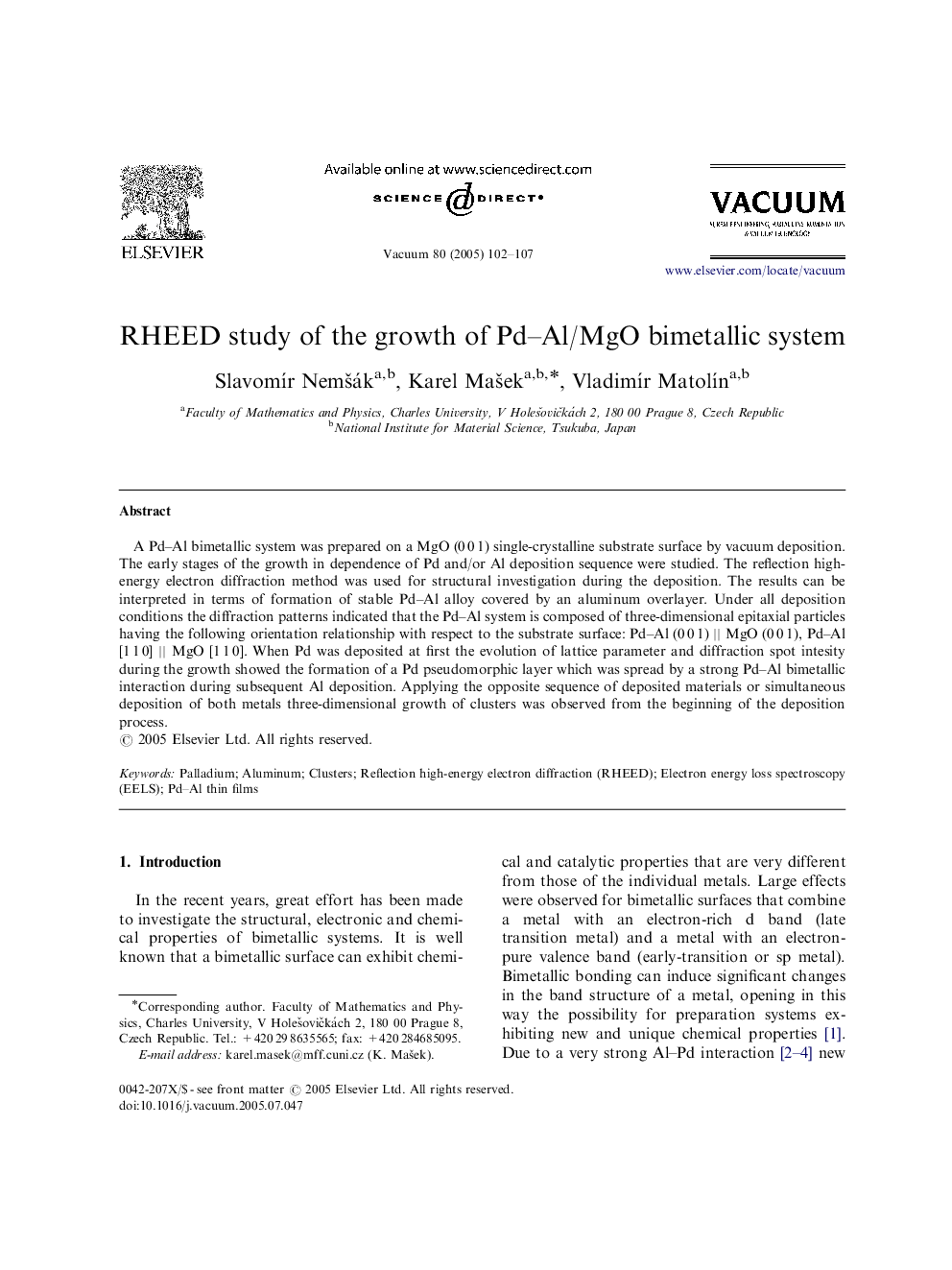| Article ID | Journal | Published Year | Pages | File Type |
|---|---|---|---|---|
| 9821486 | Vacuum | 2005 | 6 Pages |
Abstract
A Pd-Al bimetallic system was prepared on a MgO (0Â 0Â 1) single-crystalline substrate surface by vacuum deposition. The early stages of the growth in dependence of Pd and/or Al deposition sequence were studied. The reflection high-energy electron diffraction method was used for structural investigation during the deposition. The results can be interpreted in terms of formation of stable Pd-Al alloy covered by an aluminum overlayer. Under all deposition conditions the diffraction patterns indicated that the Pd-Al system is composed of three-dimensional epitaxial particles having the following orientation relationship with respect to the substrate surface: Pd-Al (0Â 0Â 1) || MgO (0Â 0Â 1), Pd-Al [1Â 1Â 0] || MgO [1Â 1Â 0]. When Pd was deposited at first the evolution of lattice parameter and diffraction spot intesity during the growth showed the formation of a Pd pseudomorphic layer which was spread by a strong Pd-Al bimetallic interaction during subsequent Al deposition. Applying the opposite sequence of deposited materials or simultaneous deposition of both metals three-dimensional growth of clusters was observed from the beginning of the deposition process.
Keywords
Related Topics
Physical Sciences and Engineering
Materials Science
Surfaces, Coatings and Films
Authors
SlavomÃr NemÅ¡ák, Karel MaÅ¡ek, VladimÃr MatolÃn,
